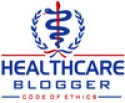It is therefore postulated here that health care expenditures are inversely proportional to EHR usage rates. The following is a rigorous analysis of the mechanisms by which EHRs are reducing health care costs, intended to inform policy makers as customary in most health care related studies, which cannot be completed, or published, without a salient recommendation of interest to policy makers.
Productivity Optimization – Numerous carefully estimated anecdotal studies consistently show that introduction of an EHR in ambulatory practice can reduce provider productivity by 50% or more. This directly translates into 50% (or more) savings in health care expenditures for office visits. Unfortunately, the same studies also show that in most cases this reduction in office visits is transient, with most providers regaining ability to charge for as much as 80% of their pre-EHR visit volume within six months to a year. Still, 20% long term savings is significant and could probably be optimized further by introducing more speed tempering features into certified EHRs. Equally rigorous studies show preliminary evidence that the savings realized from introducing fully functioning EHRs in Emergency Departments far exceed those in the ambulatory sector. Unlike other Socialist countries that were compelled to nationalize the entire health care system just so they can reduce productivity and discourage utilization by creating long waiting lines, Yankee ingenuity is producing better results at lower costs.
Banishment of THE Pen – The Physician Pen has been long known for being the most financially devastating instrument ever invented. In spite of pharmaceutical reps efforts to the contrary, EHRs are successfully removing all pens from medical practice, including but not limited to, the Physician Pen. Where physicians used to carry several handsome pens in that little pocket right under their embroidered name and title, they now carry an EHR contained in a device that may or may not fit in a less accessible pocket and either way requires both hands, ample light and an adequate supply of battery power to order the simplest thing. The better EHRs also provide various speed bumps on the road to ordering by popping up multiple warnings and good financial advice equidistantly placed at 10 to 15 milliseconds intervals. Data from the very similar retail industry shows that impulse buying is greatly increased by simplifying the process, such as the one-click checkout at Amazon. The reverse logic must also be true, so increasing complexity should reduce impulse ordering in medicine. Judging by Amazon’s successful strategy, the savings in health care are expected to be spectacular.
Customer Intimidation – As EHRs become better at measuring the abysmal state of our health care non-system, and expose the horrors and frequency of medical errors by either careless omission or profit-driven commission, it is estimated that health conscious consumers will increasingly avoid dangerous encounters with the medical complex, thus further reducing utilization and cutting costs. Strategic publicity campaigns advertising security and privacy breaches in other computerized industries, and in health care if any are found, should eliminate another segment of customers. However, the largest cost savings are projected to come from customers refraining from seeking care for, or even mentioning, potentially embarrassing health problems for fear of public exposure through interconnected EHRs.
Accelerated Attrition – EHRs are very powerful tools. So powerful that the prospect of having to purchase and use an EHR is more than enough to prompt older physicians, particularly those in private practice, to consider retirement or transition to other occupations. The evidence shows that there is direct anecdotal correlation between negative reaction to introduction of EHRs and acceptance of cost-saving team approaches to provision of medical care. The semi-natural attrition of experienced and highly compensated physicians who insist on treating, and charging for, every sore throat and every knee scrape, in spite of mounting evidence that lower paid resources can refer those to appropriate specialists with equal outcomes, should in the course of time increase the amount of savings directly attributable to the prevalence of EHRs.
Free Labor Procurement – EHRs are particularly adept at encouraging and showcasing the historical selflessness and ethical conduct of medical doctors, by providing multiple means for doctors to contribute to the well-being of their patients practically free of charge, at all hours of day and night. From the ubiquitous email to the occasional webcam session to the continuous evaluation of uploaded self-quantification vital data from patients empowered to have their health expertly monitored, physicians using EHRs can provide this simple courtesy service to their customers from the office, the home, the yacht or the golf course. These proactive preventative measures should result in extensive reductions in disease burden. Constantly connected physicians, armed with the latest monitoring tools, could detect strokes, heart attacks and maybe even cancer years before actual manifestation of symptoms. And at no cost to society.
The implications for policy makers are pretty straightforward. EHR adoption should continue to be encouraged at all costs. EHRs must evolve to seamlessly and continuously connect to all consumer monitoring devices, which implies a preference for cloud based technologies, and a security breach here and there is not necessarily an impediment to success. EHRs should continue to increase the levels of automated decision support, improve analytics and increase frequency and scope of various alerts. Basically, keep up the good work. We’re right on target.

 RSS Feed
RSS Feed































